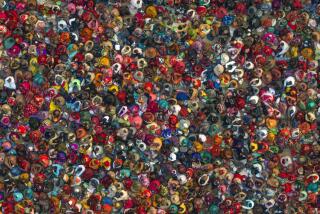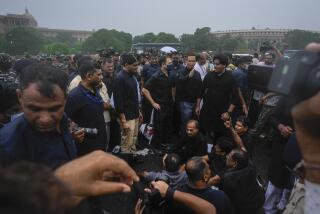INDIA
- Share via
India won independence in August 1947 after nearly two centuries as part of the British Empire--and a four-decade nationalist campaign led by Mohandas K. “Mahatma” Gandhi. With the adoption of its constitution in 1948, it became the world’s largest democracy. The second most populous nation is a federal state with a parliamentary form of government, where 15 major languages, five key religions and countless castes contribute to an almost unmanageable diversity. But amid dire poverty its democracy remains resilient: “There has been an expansion of Indian democracy right down to the grass roots. . . .” scholar Manojoran Mohanty says. “Poverty and inequality coexist with a rising sense of right, increasing consciousness.”
CHINA
After the overthrow of the last Chinese dynasty in 1912, the republic that ensued dissolved amid foreign interventions and factional fighting that culminated in the victory of Communist over Nationalist forces in 1949. The Communists, led by Mao Tse-tung, established the People’s Republic of China and instituted reforms that included collectivizing agriculture and nationalizing industry. Today, China is the world’s last great communist authoritarian state. Though its leaders are responsible for terrible persecutions and purges, China is also a land of progress and achievement: It leads the world in economic growth and is on the verge on conquering the centuries-old blights of poverty and illiteracy.
HOW THE ASIAN TITANS COMPARE
Population
India: 919 million
China: 1.2 billion
*
Annual Population Growth
India: 1.8%
China: 1.2%
*
Estimated population in 2025
India: 1.4 billion
China: 1.5 billion
*
Per Capita GDP (1994)
India: $320
China: $530
*
Gross Domestic Product (1994)
India: $293 billion
China: $522 billion
*
Average Annual GDP Growth (1990-94)
India: 3.8%
China: 12.9%
*
Literacy Rate Among All Adults
India: 52%
China: 81%
*
Literacy Rate Among Women
India: 48%
China: 73%
*
Life Expectancy
India: 62
China: 69
*
Life Expectancy Among Women
India: 60
China: 71
*
Infant Mortality Rate (per 1,000 live births)
India: 70
China: 30
*
Children Under 5 Who Are Malnourished
India: 63%
China: 17%
Sources: World Bank World Development Report 1996; U.N. Development Program; UNICEF; government of China; government of India; U.N. World Food Program; “India: Economic Development and Social Opportunity,” Jean Dreze and Amratya Sen (1995); “India-China: Overview of the Two Giants of the 21st Century” (McKinsey & Co., 1995)
More to Read
Sign up for Essential California
The most important California stories and recommendations in your inbox every morning.
You may occasionally receive promotional content from the Los Angeles Times.










